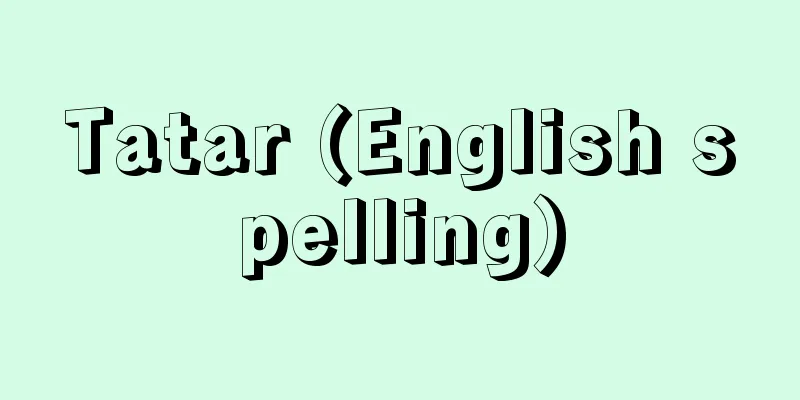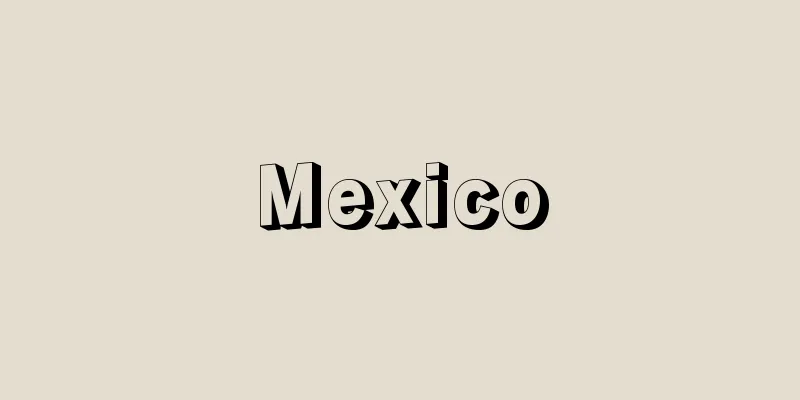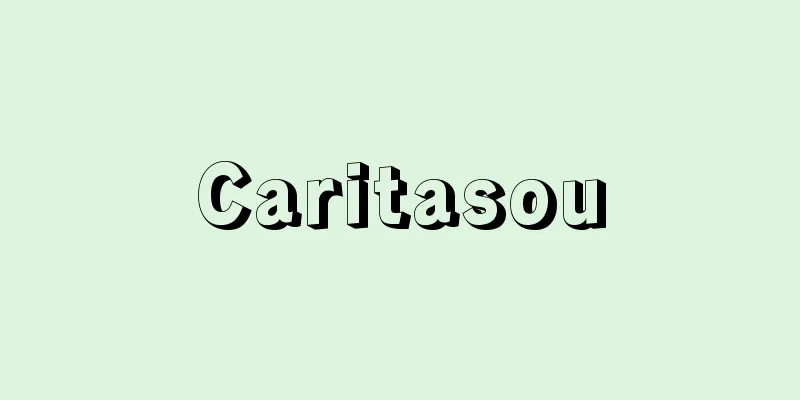Tatar (English spelling)

|
(1) The name Tatar first appears in the Turkic inscriptions erected in the Orkhon River basin in the early 8th century. In the mid-8th century, there were nine Tatar families who lived southeast of Lake Baikal and oppressed the Kyrgyz people and advanced into the Orkhon River basin, and 30 Tatar families who were nomadic in the Hulunbuir region to the east. In the 10th century, both came under the control of the Khitan. In the Jin dynasty, the Mongol tribe, which belonged to the latter, rose to power, and in 1202, Genghis Khan defeated the Tatar tribes and unified the Mongolian plateau. Other tribes also called themselves Mongols, but the Song people of China continued to call the Mongolian nomadic tribes Tatar. (2) The descendants of the Yuan dynasty, which was destroyed by the Ming dynasty and moved north, defeated the Mongolian Oirats (Wa-sha), a separate tribe in the west, and established hegemony in Inner Mongolia. The Chinese of the Ming dynasty called the descendants of the Yuan dynasty Tatars. In the early Ming Dynasty, the Tatars were attacked by the Ming army many times and were oppressed by the Oirats, causing them to decline, but at the end of the 15th century, Dayan Khan (Dayanhan) unified the Tatars, and in the mid-16th century, Altan (Oredo) invaded the Ming Dynasty and oppressed them, wiped out the Oirats from Outer Mongolia, and conquered the Qinghai region, which led to the Mongolian peoples migrating to these regions, which led to the distribution of the Mongolian people today. He also invaded Tibet, which led to the spread of Lamaism to the Mongolians. (3) Europeans who received the Mongol invasion in the 13th century called them devils (Tartars) and called the Mongols and the Turkic peoples under their rule Tartars and Tatars, and even today, the Turkic peoples of European Russia, the Caucasus, and Siberia in the former Soviet Union are collectively called Tatars. Source: Encyclopaedia Britannica Concise Encyclopedia About Encyclopaedia Britannica Concise Encyclopedia Information |
|
(1) 8世紀初めにオルホン川流域に建てられた突厥碑文に初めてタタールの名がみえるが,8世紀中頃バイカル湖南東方面に居住しキルギス族を圧迫,オルホン川流域に進出した九姓タタールと,それ以東フルンブイル地方にわたって遊牧していた三十姓タタールとがあり,10世紀に両者は契丹の支配下に入った。金代にいたり後者に属していたモンゴル部が興起,1202年チンギス・ハンがタタール部族を討滅,モンゴル高原を統一すると,他部族もモンゴルを称したが,中国の宋人はなおモンゴルの遊牧諸族を韃靼と称した。 (2) 明代に滅ぼされて北走した元朝の子孫は,西方のモンゴル系の別部オイラート (瓦剌)を打ち破って,内モンゴルに覇権を確立した。明代の中国人はそれら元朝の子孫を韃靼と呼んだ。タタールは明初何度も明軍の攻撃を受け,オイラートにも圧迫され衰退したが,15世紀末ダヤン・ハン (達延汗)がタタールを統一,それを基盤に 16世紀中頃アルタン (俺答)は明に侵入して苦しめ,オイラートを外モンゴルから一掃,青海地方をも征服し,これらの地方へモンゴル族が移住,それが今日のモンゴル族の分布につながった。またチベットに遠征し,ラマ教のモンゴル族への流布の契機をつくったのも彼である。 (3) 13世紀にモンゴル族の侵入を受けたヨーロッパ人は彼らを悪魔 (タルタル) と称し,モンゴルとその支配下のチュルク系民族をタルタル,タタールと呼び,以来今日でも旧ソ連邦のヨーロッパ・ロシア,カフカス,シベリアのチュルク系住民はタタール人と総称されている。
出典 ブリタニカ国際大百科事典 小項目事典ブリタニカ国際大百科事典 小項目事典について 情報 |
<<: Tatar Straits - Tatarskiy Proliv
Recommend
Ultimate weapon
The term came into use around the end of the 1950s...
Remorse - Retribution
Medieval legal term. The act of parents or the ori...
Osaka Gold Storehouse
...the currency storage and disbursement agency o...
Murray, J. (Publisher) (English)
…However, it was not until the 19th century in Eu...
Heterocera
… Most moths are nocturnal, so many of them have ...
Chrysanthemum orb - Chrysanthemum orb
…The underground stems spread horizontally and fi...
Fire roasting - Hiaburi
Also known as kazai (burning at the stake) or fuke...
Callicebus torquatus
…[Hironari Hayaki]. . … *Some of the terminology ...
Geto [Hot Spring] - Geto
This hot spring is a national health resort locate...
Eddy current - Uzuranryu
…The wind is generally strong, there is little fi...
Aparcelo - Aparcelo
... Hacienda management is broadly divided into t...
Cygnus 61 (61st Cygnus) - Cygnus 61 (English spelling)
A visible binary star system, 84 astronomical unit...
Aoyama Imperial Palace
This Imperial Palace was located in Motoakasaka, M...
zecchino
...This gold coin is engraved with the statue of ...
Head of the Foot Warriors
...They were ranked second only to the bangashira...









